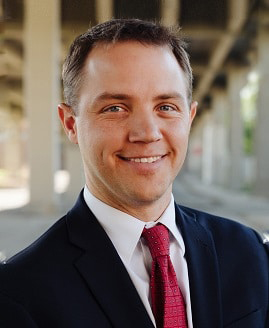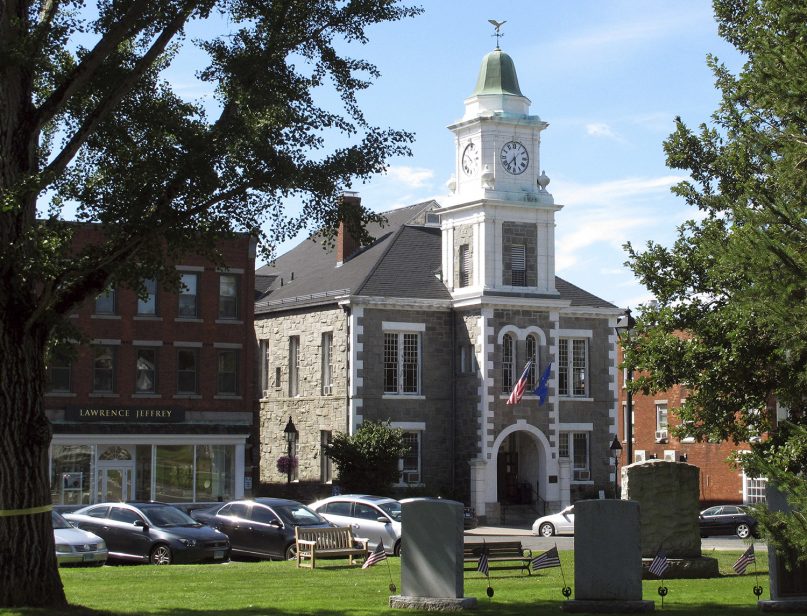(RNS) — Jewish Americans have recently suffered yet another wave of antisemitic violence. Synagogues have been vandalized in several major cities, and Jewish Americans have been attacked while simply walking down the street — incidents that, several commentators have pointed out, we might have thought belonged to another era.
There is another kind of antisemitism that we may equally think of as a bygone relic of the suburban boom: discriminatory zoning. Yet, excluding Jews from certain neighborhoods or entire towns is still a vibrant practice that disproportionately affects Jewish Americans. While Jews make up roughly 2% of the American population, nearly 15% of all reported federal religious land use cases involve Jewish assemblies or institutions.
The first zoning codes were developed in the 1920s, and in 1926, the Supreme Court ruled that zoning codes were generally a proper exercise of the government’s police power. Many zoning codes were created for benign reasons, others for overtly bigoted ones, but for the next 60 years, zoning codes expanded in scope and proliferated, largely unchecked by the courts.
RELATED: US Jews rally for more support in combating antisemitism
In 1985, in Cleburne v. Cleburne Living Center, the Supreme Court finally struck down a zoning code for discriminating against the intellectually disabled in violation of the equal protection clause of the Fourteenth Amendment. But the decision did little to slow zoning and land use as one of the most powerful and effective ways to direct the future of a community.
As zoning powers expanded, religious and racial minorities were often the ones that suffered. Local zoning boards were increasingly vested with discretionary authority over who went where and on what conditions. Religious assemblies in particular found themselves up against unequal and burdensome regulations that made it nearly impossible to locate in their community. Some codes excluded new religious assemblies and institutions altogether. Others imposed unequal permitting requirements that subjected religious groups to zoning approval procedures that added time and costs to their projects.
In 2000, Congress responded to the mounting evidence that municipalities were abusing their zoning powers by enacting the Religious Land Use and Institutionalized Persons Act, and for the past 20 years, RLUIPA has helped thousands of religious groups overcome zoning barriers. In several widely reported cases, courts have ordered municipalities to pay millions of dollars to Jewish groups that were wrongly denied zoning approval.
But it still remains a relatively unknown and under-enforced statute. Far too many municipalities still know nothing about RLUIPA, and far too many religious groups suffer because they don’t know that a strong federal civil rights law is available to them. For every reported lawsuit, there are likely many others that were never filed because of a lack of familiarity with RLUIPA.
For more than a decade, my firm represented the Chabad Lubavitch of Litchfield in their fight to convert a Victorian building in the historic district of Litchfield, Connecticut, into a synagogue. After years of hard-fought litigation, a federal court granted the Chabad the zoning relief it sought and awarded legal fees of over $700,000. Despite the judgment, the town and its historic district commission continued to fight. Ultimately, the court had to order Litchfield to tax its citizens to pay for the amount owed to the Chabad.
RELATED: Chabad rabbi stabbed outside Boston Jewish day school
In some cases, the Justice Department has had to intervene to enforce RLIUPA’s provisions. In Hollywood Hills, Florida, local authorities harassed a synagogue’s congregation with parking tickets and then revoked its initial zoning approval, calling the synagogue “too controversial” and saying it would “never fit in Hollywood Hills.” After years of litigation, the city settled the case by paying the synagogue $2 million in damages and attorneys’ fees. As part of the settlement, the city also agreed to train its employees and leaders on the requirements of RLUIPA.
 If we are to stem the tide of antisemitism in the United States and ensure Jews can find a safe place to flourish and worship in our communities, we need to increase awareness of RLUIPA among Jewish Americans so they may hold municipalities to account when its terms are violated. It is our hope that the Chabad case, the Hollywood Hills case, and the many others like them will encourage municipalities to respect the rights of Jewish Americans to assemble and worship in our communities.
If we are to stem the tide of antisemitism in the United States and ensure Jews can find a safe place to flourish and worship in our communities, we need to increase awareness of RLUIPA among Jewish Americans so they may hold municipalities to account when its terms are violated. It is our hope that the Chabad case, the Hollywood Hills case, and the many others like them will encourage municipalities to respect the rights of Jewish Americans to assemble and worship in our communities.
(Noel Sterett is a religious liberty and property attorney with national law firm Dalton & Tomich and represents all faith communities in their right to worship. The views expressed in this commentary do not necessarily reflect those of Religion News Service.)





